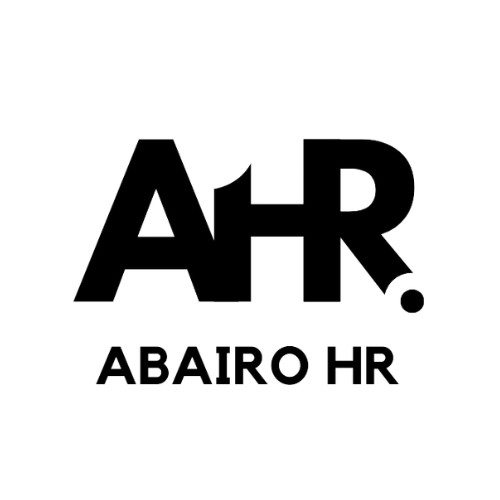How to Create a Fair and Transparent Performance Review System
Creating a fair and transparent performance review system is essential for fostering trust, motivation, and growth within an organization. Employees perform better when they understand how their efforts are evaluated and believe the process is unbiased. In this blog, we’ll explore how to design a performance review system that promotes fairness, transparency, and continuous improvement.
A fair and transparent performance review system is essential for fostering trust, motivation, and growth within an organization. Employees thrive when they understand how their performance is evaluated and feel that the process is objective and unbiased. However, many organizations struggle with creating review systems that are perceived as fair and effective.
In this blog, we’ll explore the importance of fairness and transparency in performance reviews, key elements to consider, and actionable steps to build an evaluation process that benefits both employees and the organization.
Understanding a Fair and Transparent Performance Review System
A fair and transparent performance review system ensures that employees are evaluated based on objective criteria, clear expectations, and open communication. It eliminates biases, aligns individual goals with organizational objectives, and provides constructive feedback that helps employees grow.
Why Is It Important?
A well-structured review process offers several benefits:
- Employee Engagement: Fair evaluations boost morale and motivation.
- Retention and Satisfaction: Transparency in reviews fosters trust and reduces turnover.
- Organizational Growth: Clear feedback drives performance improvements and goal alignment.
Key Statistics:
- According to a Gallup survey, only 14% of employees strongly agree that performance reviews inspire them to improve.
- SHRM reports that 85% of employees are more engaged when they understand how their performance is measured.
Key Elements of a Fair and Transparent Performance Review System
1. Clear and Objective Criteria
Why It Matters: Employees need to know what is expected of them and how their performance will be measured to ensure fairness and consistency.
Best Practices:
- Define measurable performance metrics aligned with job roles.
- Use SMART goals to establish clear expectations.
- Ensure consistency across all teams and departments.
Example: A tech company introduced a competency framework with specific performance indicators for each role, leading to a 20% improvement in employee satisfaction with the review process.
2. Regular and Consistent Evaluations
Why It Matters: Frequent check-ins provide employees with opportunities to improve rather than waiting for annual reviews.
Best Practices:
- Conduct quarterly or biannual performance reviews.
- Incorporate continuous feedback mechanisms.
- Ensure consistency across all teams and departments.
Example: A financial firm shifted to quarterly reviews and saw a 15% increase in employee engagement.
3. Two-Way Communication
Why It Matters: A transparent review process encourages employees to share their perspectives, leading to more productive and meaningful discussions.
Best Practices:
- Encourage open dialogue during review meetings.
- Allow employees to provide self-assessments.
- Address concerns and expectations transparently.
Example: A retail company adopted a feedback model where employees could discuss their achievements and challenges, leading to improved trust in the review process.
4. Training for Managers
Why It Matters: Managers play a critical role in ensuring that performance evaluations are conducted fairly and consistently.
Best Practices:
- Provide training on bias reduction and constructive feedback delivery.
- Equip managers with tools to document performance throughout the year.
- Encourage empathy and active listening.
Example: An e-commerce company trained its managers in unconscious bias awareness, resulting in a 25% decrease in perceived favoritism during reviews.
5. Transparent Feedback and Action Plans
Why It Matters: Employees should receive clear feedback and actionable steps to improve their performance and advance their careers.
Best Practices:
- Provide specific examples of strengths and areas for development.
- Set clear next steps and professional development opportunities.
- Follow up regularly to track progress.
Example: A healthcare organization created personalized action plans after performance reviews, leading to a 30% improvement in employee productivity.
The Risks of an Unfair Performance Review System
Failing to implement a fair and transparent performance review system can result in:
- Decreased Morale: Employees may feel undervalued and demotivated.
- Increased Turnover: Perceived bias or favoritism can drive employees to seek opportunities elsewhere.
- Legal and Compliance Issues: Inconsistent evaluations may lead to disputes and potential lawsuits.
Steps to Create a Fair and Transparent Performance Review System
- Define Clear Metrics: Establish measurable criteria and align them with business goals.
- Ensure Regular Check-ins: Conduct periodic reviews rather than annual appraisals.
- Encourage Feedback Culture: Foster open communication and continuous feedback.
- Train Leaders Effectively: Equip managers with the skills needed for fair evaluations.
- Leverage Technology: Use HR tools to track performance objectively.
- Act on Feedback: Show employees that their feedback is valued by implementing changes.
A fair and transparent performance review system is a cornerstone of a thriving workplace. By setting clear expectations, encouraging open communication, and focusing on continuous improvement, organizations can create an environment where employees feel valued and motivated to perform at their best.
“Is your performance review system fair and transparent? Start implementing these strategies today to foster a culture of accountability and growth.”
Let’s Start Something new
Say Hello!
Let’s get the ball rolling! Just fill out the details below, and one of our HR experts will get back to you faster than you can think of an HR question.
